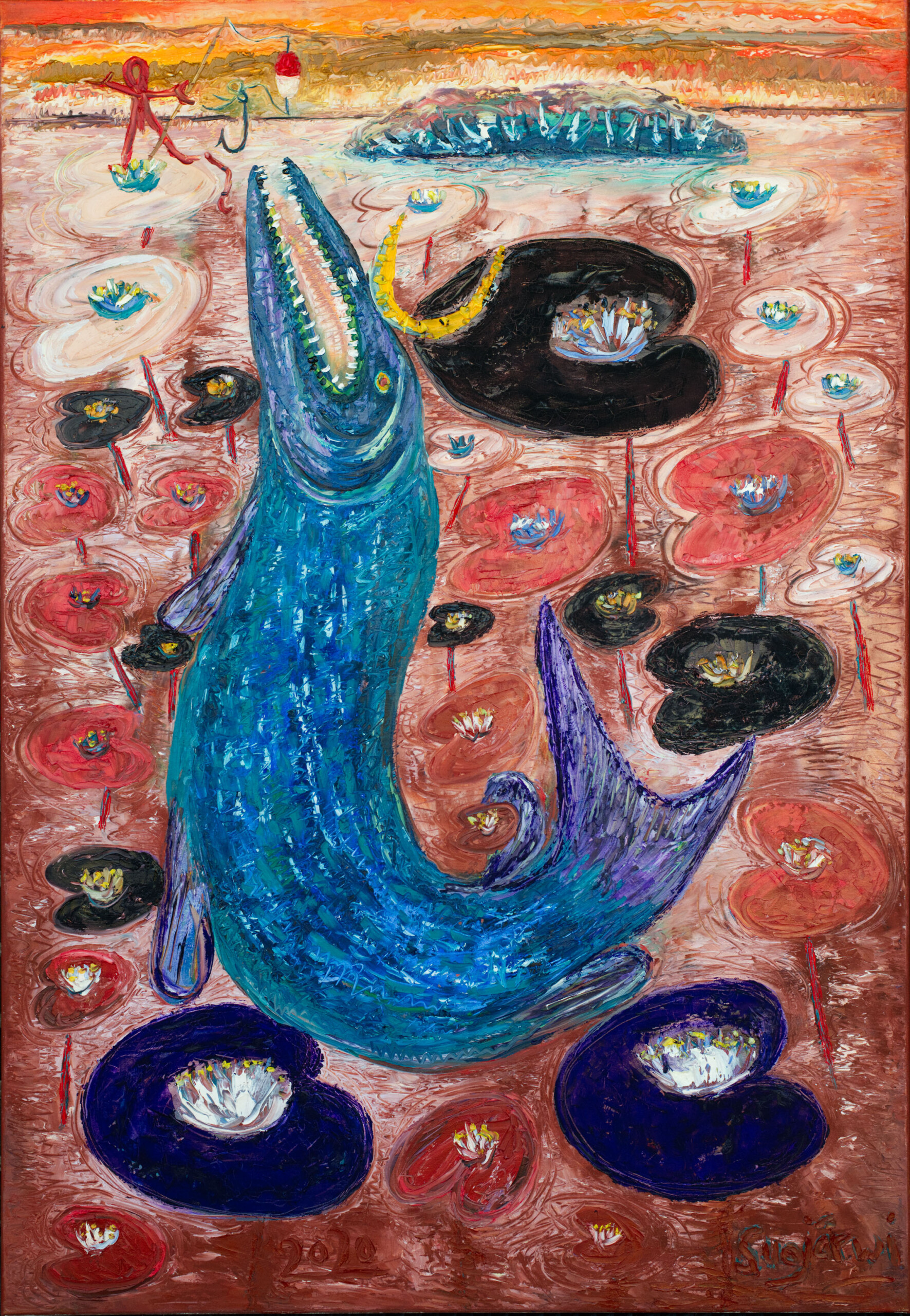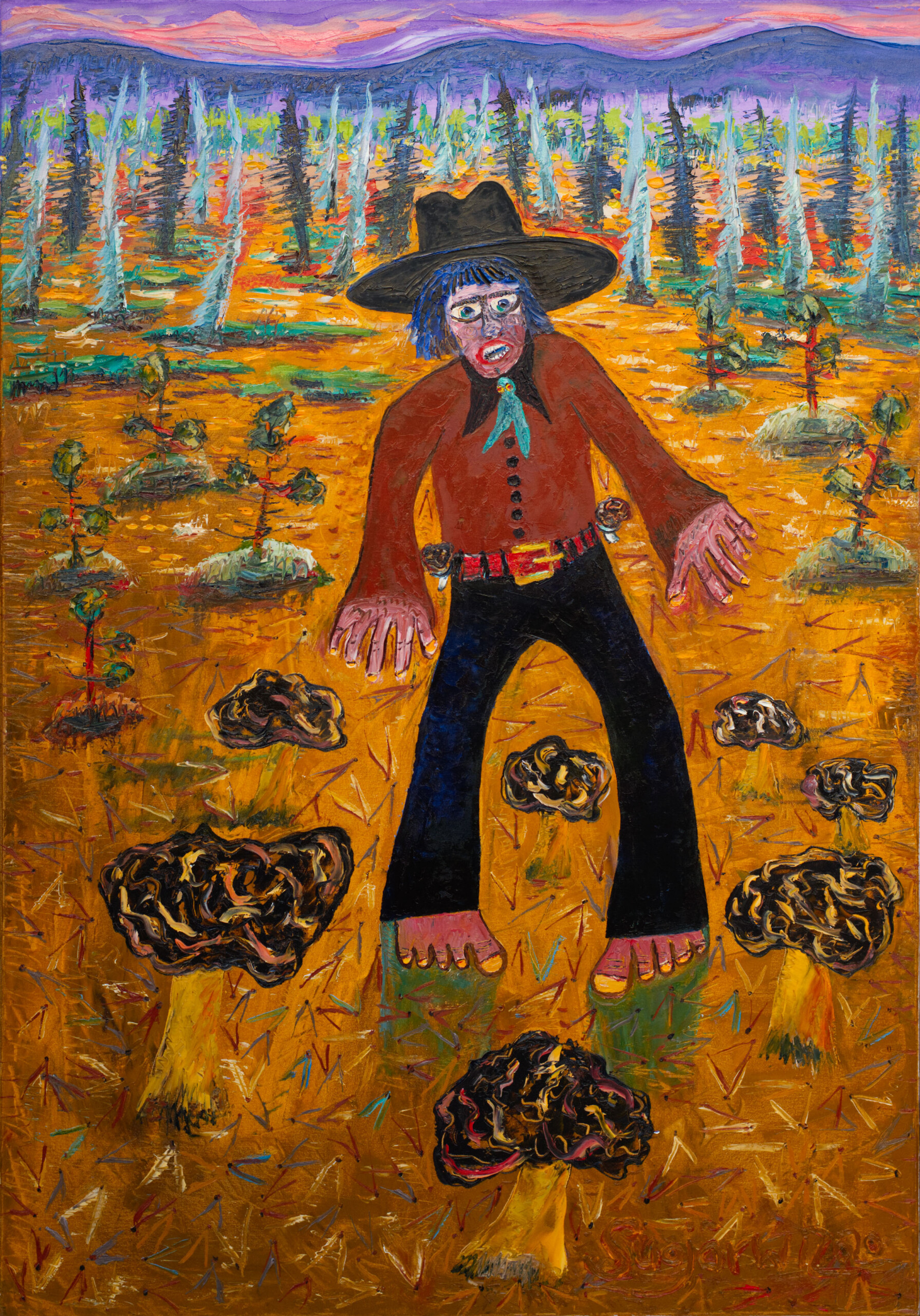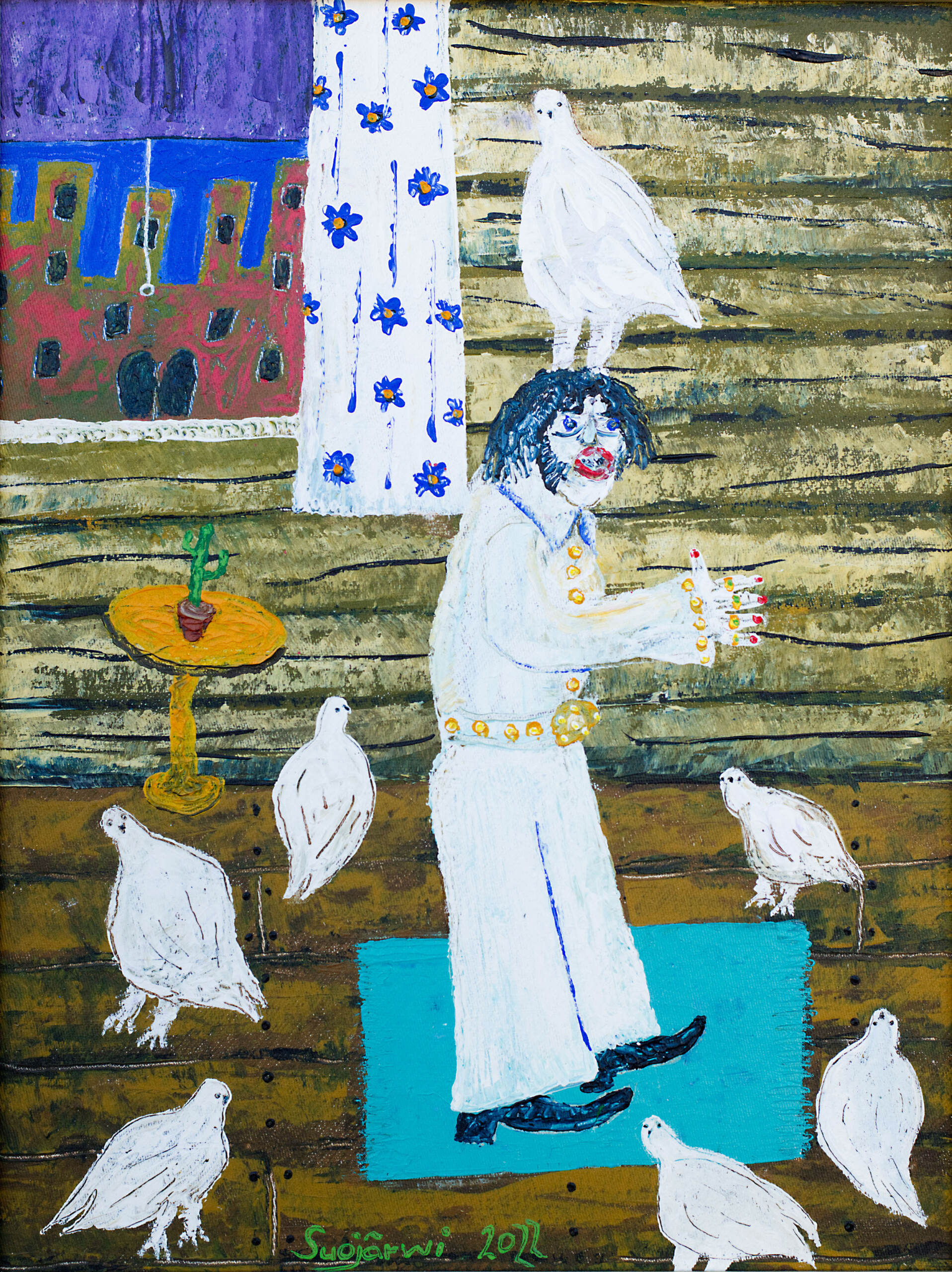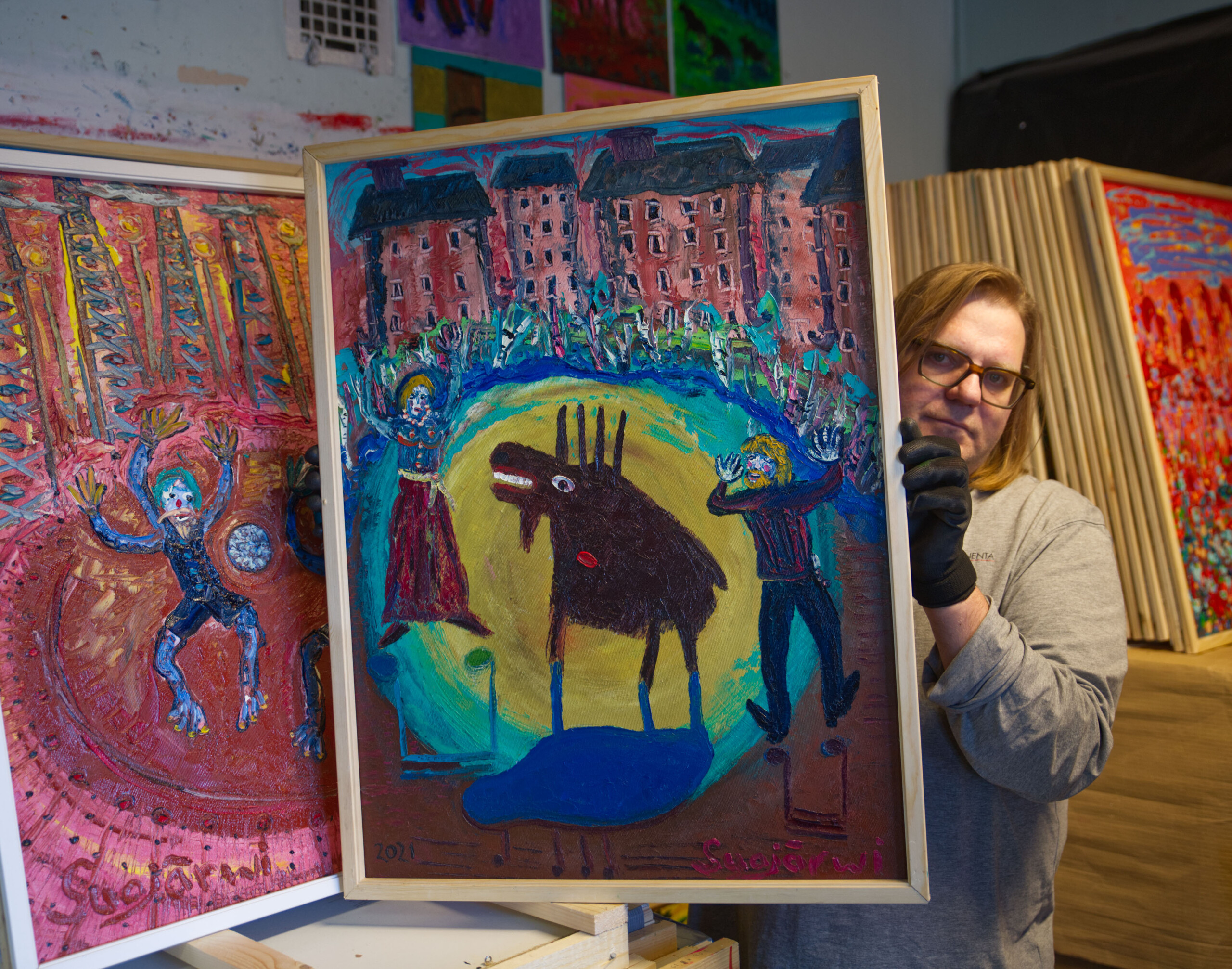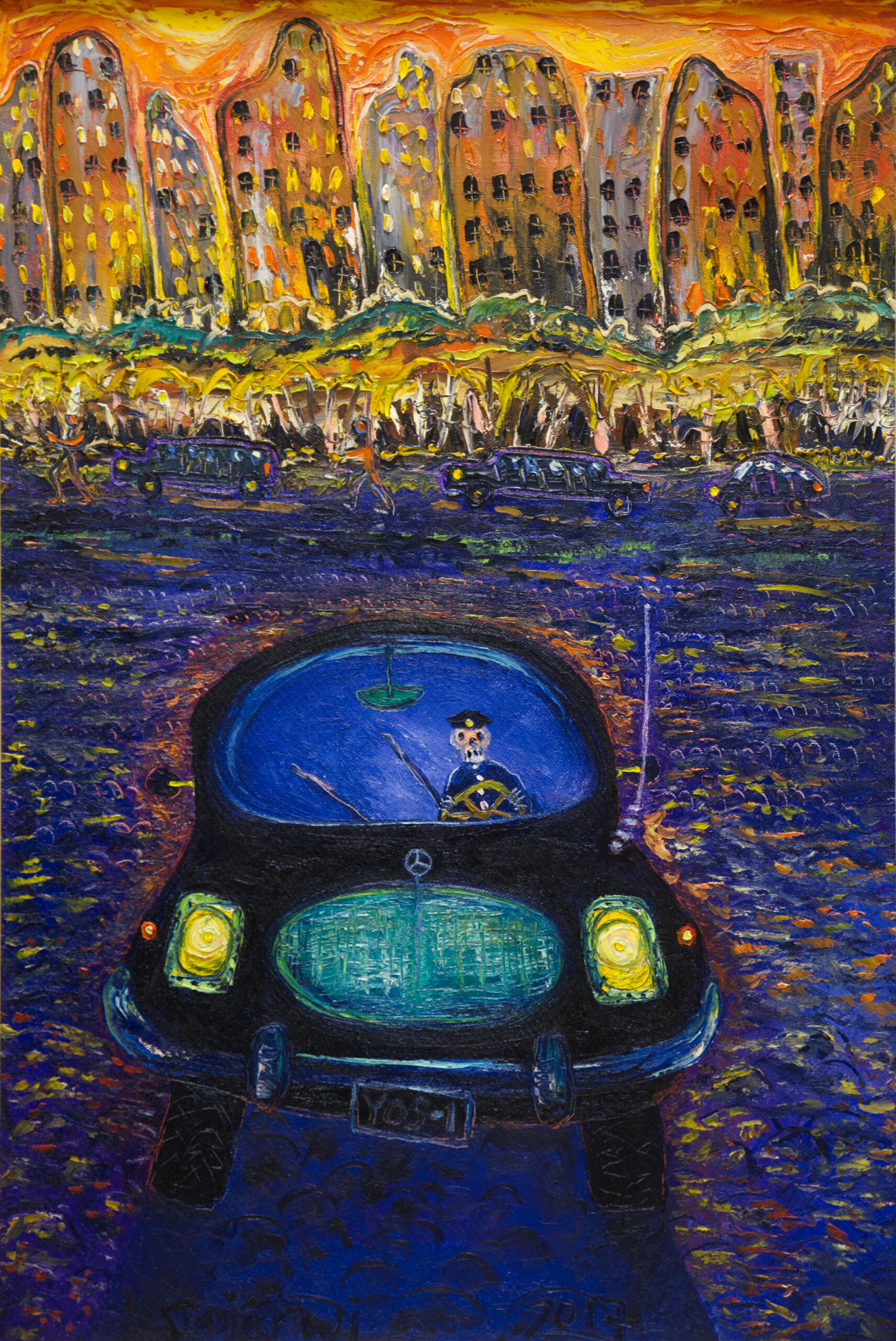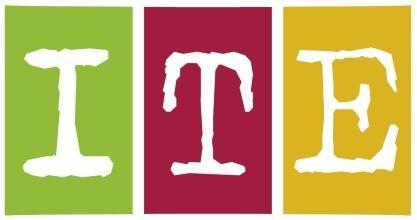Jarmo Suojärvi
Karkkila (1966)
People often ask how ITE artists differ from ordinary hobby artists. Many formal quality criteria are used, such as scope of production, originality of the works and the importance of art-making in the artist’s life. But, ultimately, it’s very easy to recognise real ITE artists: they have an exceptional ‘depth vision’ – and they want to make their discoveries available to the rest of us. They are driven by seeing and sharing their ideas.
Jarmo Suojärvi (b. 1966) spent his childhood in Posio, in the middle of the wilderness of the Koillismaa region in north-eastern Finland. His home stood on the slope of a tree-covered hill. Magnificent views do not put food on the table, and the family had to work hard to make a living. Suojärvi’s father toiled on logging sites and didn’t spend much time at home. His mother and the children picked mushrooms and berries in the forest. Suojärvi wants to share a memory from one of these trips to the wetlands to pick cloudberries that made a lasting impression on him: there he is, a little boy, sitting on a tussock with a big bucket at his feet. The sun is shining, a dragonfly lands on his shoulder, a lizard runs into the high grass. Soon a demanding voice comes from the swamp: “That bucket will not fill itself!”
Many Finnish families who lived in the countryside moved to Sweden in the 1970s. The Suojärvi family moved to southern Finland instead in their quest for an easier way to make a living. Suojärvi’s father sorted scrap at the Högfors ironworks, and his mother operated a foundry crane. The family moved into a warm flat in Karkkila in 1974.
Suojärvi’s creative nature became apparent when he was a teenager and started writing poems, something he has rediscovered after many years. The title of his latest poem is ‘Nothing’ and is about a trip he made with his grandfather Viljo. Viljo was pulling a fish trap onto the boat, but it was empty. ‘Nothing,’ he said. That also meant that there would be no fish for dinner.
“When I was a child, I thought that nothing important was happening in my life, but I was wrong. When I look at the big blocks of flats here now, I think that maybe the people who live in them have nothing in their lives other than working, going to the supermarket and watching TV. When they look out of the window, perhaps they too feel that nothing is happening in their lives.”
Suojärvi works in the same foundry as his parents used to work in. Amongst the noise and smoke of the factory, his thoughts often wander back to Posio and his childhood environment. The rugged wilderness left deep impressions on his mind, and it is still the backdrop of his life. His parents returned there, to the wetlands and forested hills, as soon as they retired.
A crane’s cry echoed from the wetland
Suojärvi started to paint in 1987, and his first work depicted two cranes. He was inspired by how well it turned out. He studied art books in his spare time, even took them to work and browsed through them during his breaks. He began to create paintings at a frantic pace, and now there are a staggering number of them in the storage basement: hundreds, perhaps more than a thousand.
His works often find their topic from his childhood hiking trips, but he still keeps a close eye on his surroundings and embeds new experiences in his paintings. Many depict the atmosphere in the northern wilderness, but there is much more to them. Figures that are familiar from films and comic books can be found in the wetlands and among birch trees: a cowboy in the swamp and Elvis in a chimneyless cabin. Suojärvi loves the animals that live in the wilderness, and they sometimes stray into the city. A snake slithers on a lawn in a housing estate – it’s a symbol of good for the artist. “People used to put a snake under the threshold of a new house to protect the house.”
The world in Suojärvi’s paintings is an eccentric mix of the northern soulscape and popular culture, but, in some works, he also ponders the challenges of urban life. Suojärvi has painted cranes every year, always in slightly different ways, but the same cranes, nonetheless.
Suojärvi’s choice of colours is unique, and he mixes warm and cold tones freely. The shades of the harsh northern landscapes glow in all their splendour. He is highly skilled and original in his use of colours and does not care about realism – he even refuses to use atmospheric perspective: “If you walk into the blue twilight in the distance, you will find the same colours, just as intense as they are close up.” He strives to communicate colours truthfully and doesn’t let the laws of physics or the conventions of reality shackle his images. Everything is close and clear. The colour mass on some works is layered into almost relief-like mountains on the canvas. He describes his recent abstract works as colour spirals and colour hurricanes.
You don’t need to dig deep to see who the source of Jarmo Suojärvi’s inspiration was, as there was ‘only one’ artist up in the north in the 1970s: Reidar Särestöniemi[A1] . “They hit me in the face” is how Suojärvi describes his first encounter with Särestöniemi’s paintings of Lapland. And his other inspiration won’t come as a surprise either: while on holiday in Holland, Suojärvi found his way to a large Vincent van Gogh exhibition.
Jarmo Suojärvi talks about a painting he’s working on. Once again, it features a housing estate. “Even a small patch of forest can offer great experiences, bird song or snow crunching underfoot in the winter.” The new painting features a piece of nature, a tiny patch of forest, left there among the blocks of flats, now under attack from strong gusts of wind. The trees are bending, branches falling. If someone with the ability to see and hear were there now, they might understand something – perhaps find a meaning in their life?
Text and images: Veli Granö
